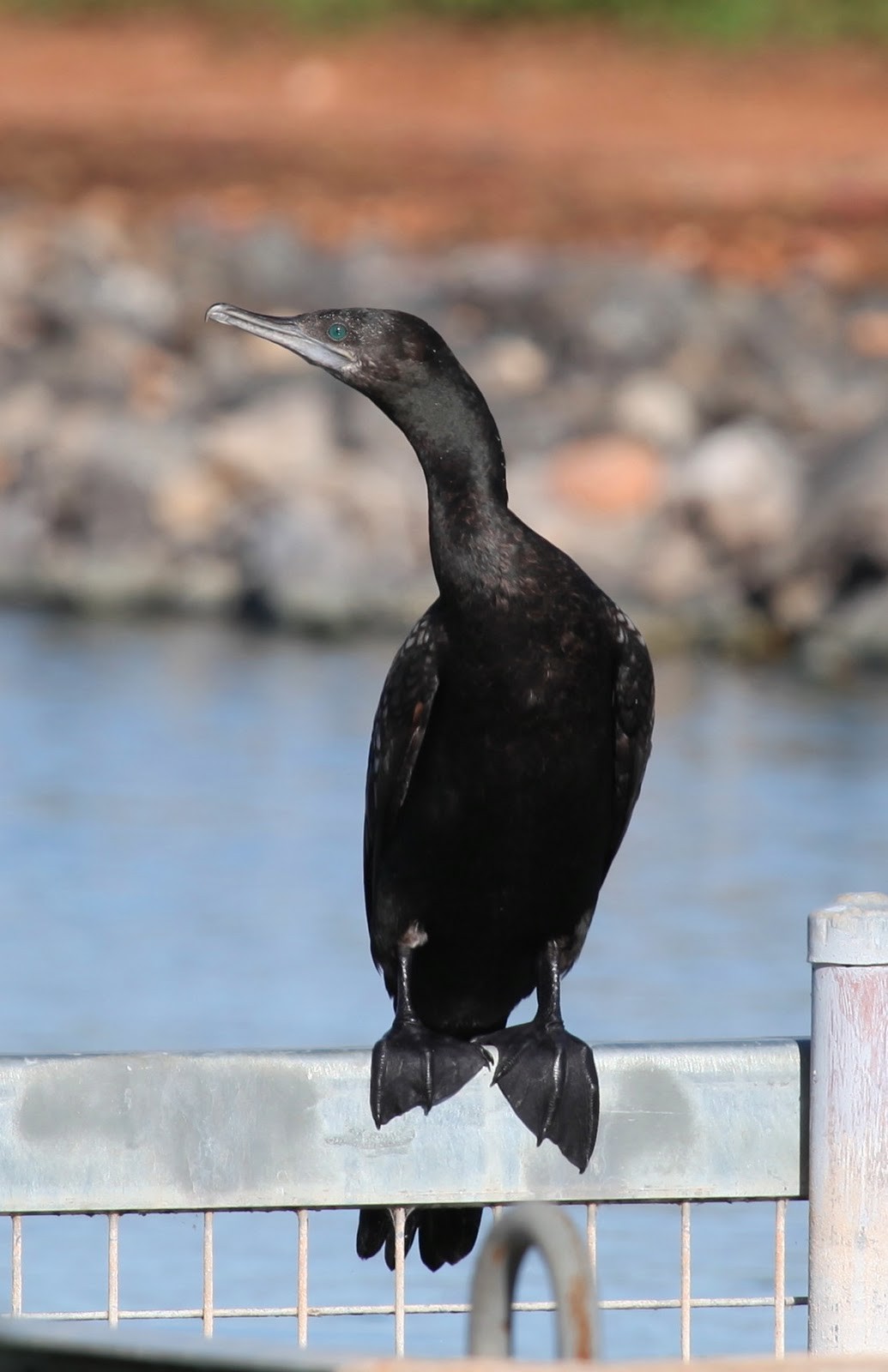Little Black Cormorant
A species of Typical Cormorants and Shags Scientific name : Phalacrocorax sulcirostris Genus : Typical Cormorants and Shags
Little Black Cormorant, A species of Typical Cormorants and Shags
Botanical name: Phalacrocorax sulcirostris
Genus: Typical Cormorants and Shags
Content
Description People often ask General Info
 , used under CC-BY-SA-3.0 /Cropped and compressed from original
, used under CC-BY-SA-3.0 /Cropped and compressed from original Description
The little black cormorant is a small cormorant measuring 60–65 cm (23.5–25.5 in) with all black plumage. The back has a greenish sheen. In breeding season, white feathers appear irregularly about the head and neck, with a whitish eyebrow evident. The plumage is a more fade brown afterwards. Males and females are identical in plumage. The long slender bill is grey, and legs and feet black. The iris of the adult is green and the juvenile brown. Immature birds have brown and black plumage. 
Size
53-64 cm (21-25 in)
Colors
Brown
Black
Gray
White
Life Expectancy
9 years
Nest Placement
Tree
Feeding Habits
Little Black Cormorant predominantly consumes fish, with a significant portion being common carp. The bird employs diving as its main foraging technique, often hunting in groups. It exhibits a preference for certain prey in different habitats, adapting its diet to available resources.
Habitat
Little Black Cormorant predominantly inhabits freshwater ecosystems, frequenting inland bodies of water like lakes, swamps, and rivers. This species is also found in man-made reservoirs and urban park ponds. Although less common in coastal areas, it can be seen in estuaries, inlets, lagoons, and mangroves. Little Black Cormorant prefers open waters that are more than 1 meter deep and is known to roost on trees, bushes, and rocks near water sources.
Dite type
Piscivorous
People often ask
General Info
Feeding Habits
Bird food type
Behavior
More gregarious than other cormorants, the little black cormorant can be found in large flocks. Groups sometimes fly in V formations. 
Distribution Area
The little black cormorant ranges from the Malay Peninsula through Indonesia (but excluding Sumatra) and New Guinea (including the D'Entrecasteaux Islands) and throughout Australia. It is found in New Zealand's North Island. It is a predominantly freshwater species, found in bodies of water inland and occasionally sheltered coastal areas. It is almost always encountered in or near water. 
Species Status
Not globally threatened.
Scientific Classification
Phylum
Chordates Class
Birds Order
Gannets and Relatives Family
Cormorants Species
Little Black Cormorant